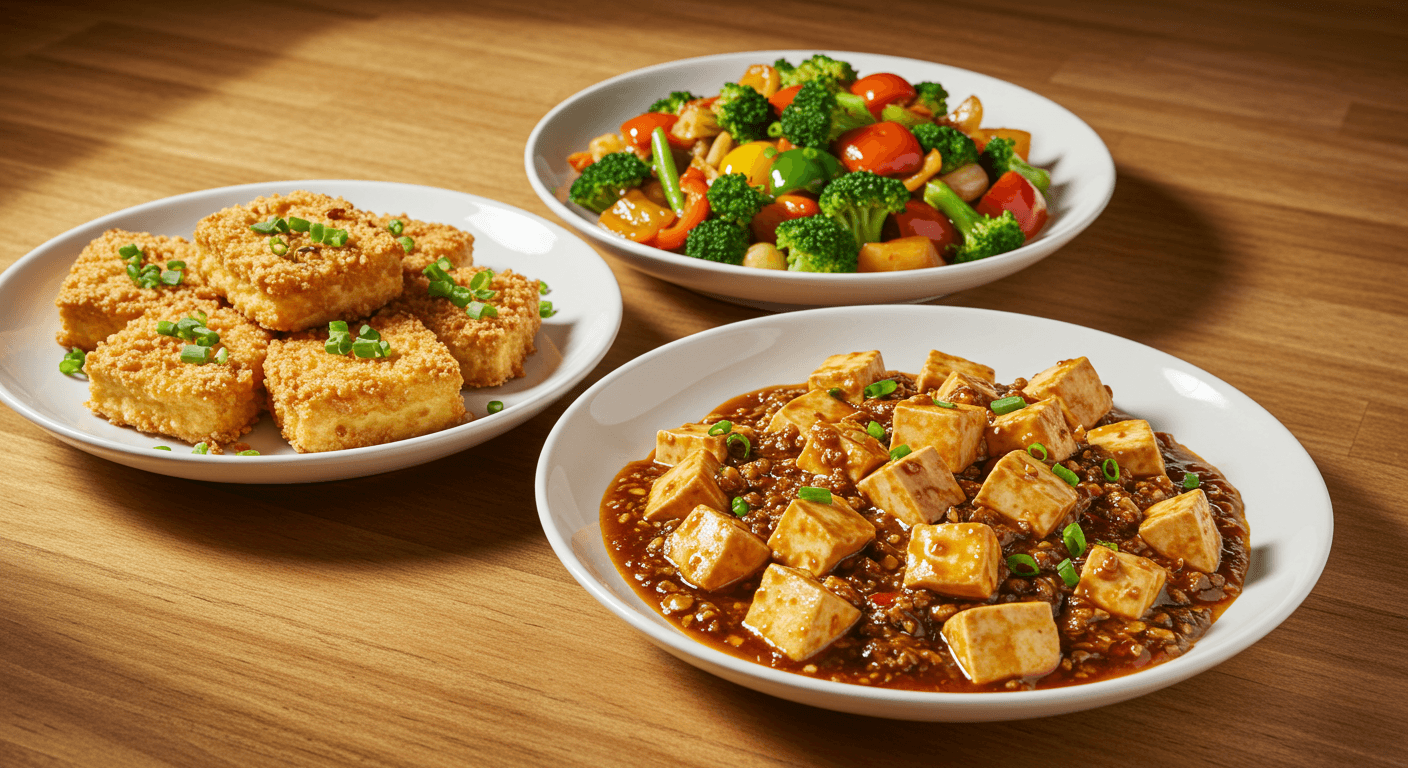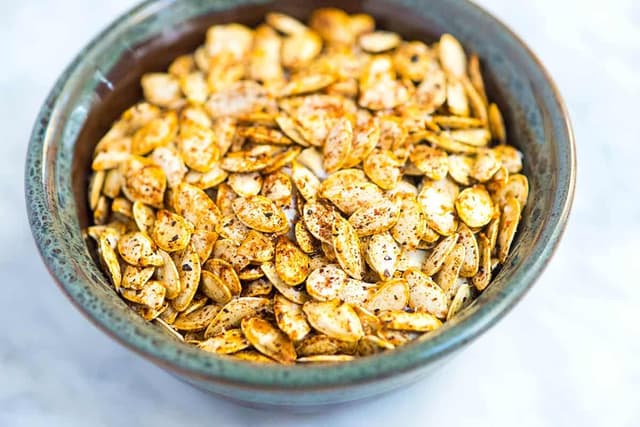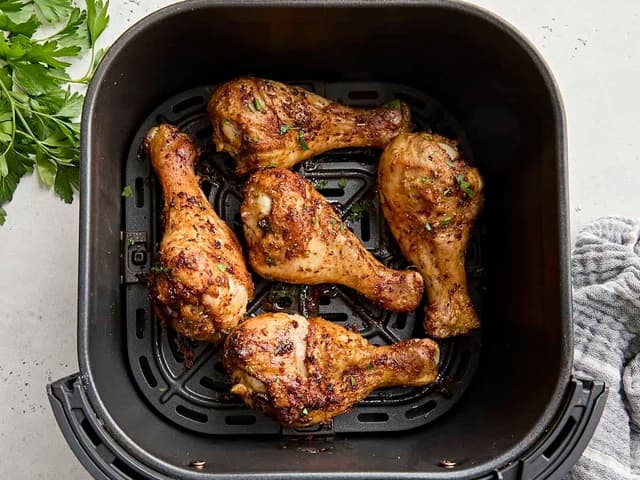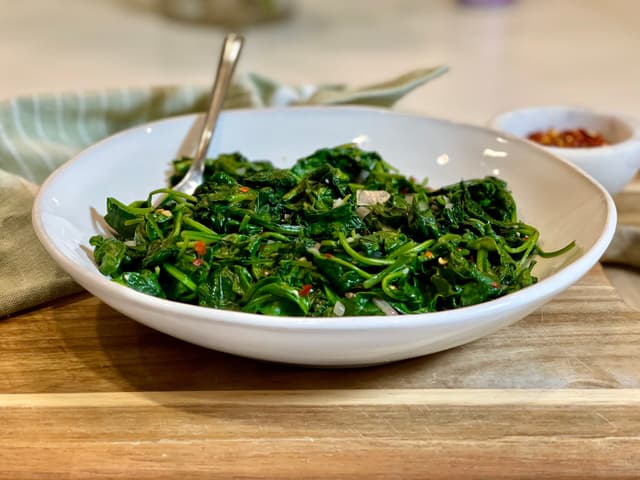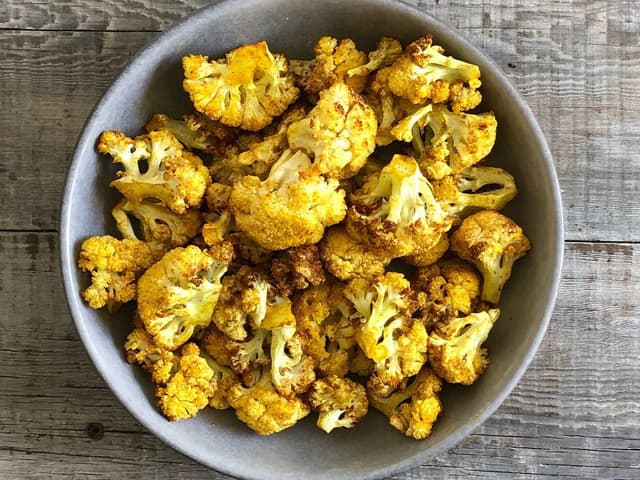Unlock the Magic of Tofu
Tofu, a staple in plant-based cuisine, often presents itself as a culinary enigma to the uninitiated. Yet, this versatile ingredient is a powerhouse of convenience, flavor potential, and nutritional benefits, making it an ideal component for a wide array of home-cooked meals. Far from being bland or difficult, tofu offers an approachable path to delicious and healthy eating, perfect for busy families, dedicated meal preppers, vegetarians, vegans, and anyone looking to explore flavorful dishes with minimal fuss.
One of tofu's most celebrated characteristics is its remarkable ability to absorb flavors, a trait that transforms it from a simple ingredient into a canvas for culinary creativity. This chameleon-like quality means a single block can be fashioned into countless dishes, adapting to marinades, spices, and sauces to suit any palate or cuisine type. Its versatility extends to texture as well; tofu can be prepared to be silky smooth, satisfyingly chewy, or delightfully crispy, fitting seamlessly into everything from hearty main courses to delicate desserts. This adaptability not only sparks creativity but can also contribute to a more economical kitchen, as one versatile ingredient can fulfill roles in multiple meals, potentially reducing food waste and simplifying grocery lists. Nutritionally, tofu is a complete protein, providing all nine essential amino acids, and is a valuable source of iron, calcium, and B-vitamins, all while being relatively low in calories and high in fiber.

Why Tofu Belongs in Your Kitchen & Perfect Moments for Tofu Feasts
The reasons to incorporate tofu into regular meal rotations are as varied as its culinary applications. Its appeal lies not only in its nutritional profile but also in its transformative textural qualities and ease of use once a few basic techniques are understood. Tofu can be the star of a dish, offering a satisfying mouthfeel that ranges from the crisp exterior and smooth interior of a perfectly pan-fried cube to the melt-in-your-mouth tenderness of silken tofu in a soup. This textural diversity is a significant part of its culinary charm.
The adaptability of tofu extends beyond flavor profiles to various preparation styles and social settings, making it a reliable staple for everything from a quick, solitary lunch to a festive dish shared among friends and family.
- Weeknight Dinners: Tofu shines in quick and easy meals. Sheet pan dinners featuring tofu and vegetables, or speedy stir-fries, can bring a healthy and flavorful meal to the table with minimal effort, a boon for busy households.
- Potlucks & Gatherings: Dishes like flavorful tofu satay skewers or a rich, plant-based tofu bolognese can be impressive and satisfying options for communal meals. Mapo Tofu, for instance, is a celebrated dish at Lunar New Year festivities and potlucks alike.
- Make-Ahead Lunches: Baked tofu is an excellent component for meal-prepped salads and sandwiches, retaining its texture and flavor well. Bento boxes featuring tofu are another convenient option for nutritious lunches throughout the week.
- Breakfast & Brunch: Beyond dinner, tofu makes its mark on morning meals. Tofu scrambles offer a hearty alternative to eggs, while vegan omelettes and quiches showcase its versatility in more elaborate breakfast or brunch settings.

Tofu's suitability for batch cooking and meal preparation positions it as a strategic ally for contemporary lifestyles that prioritize both health and efficiency, moving its role far beyond merely a substitute for other proteins. Embracing tofu recipes is a must-try for home cooks looking to expand their culinary horizons, cater to diverse dietary needs, and gain confidence in plant-based cooking. It opens a gateway to exploring global cuisines, from Asian-inspired stir-fries to Tex-Mex fajitas and Italian-style bolognese, all from one humble block.
Crispy Baked Tofu
This recipe provides a foundational method for achieving perfectly golden and wonderfully crunchy tofu cubes. These versatile morsels are fantastic in salads, grain bowls, noodle dishes, or even enjoyed as a standalone snack. This particular version is designed for simplicity and outstanding texture.
Basic Ingredients (Serves 4 people)
- 1 (14-ounce/400g) block of extra-firm tofu, pressed: As the recipe's foundation, extra-firm tofu is selected for its dense structure, which holds up beautifully during baking, resulting in a pleasingly chewy interior and a solid base for developing a crispy crust. Pressing is vital to remove excess moisture, which is a key factor for achieving maximum crispiness.
- 1 ½ tablespoons olive oil (or neutral-flavored oil like avocado or grapeseed oil): This essential fat coats the tofu, promoting even browning and playing a crucial role in creating a crunchy exterior. It also helps to keep the inside of the tofu from becoming dry during the high-heat baking process.
- 1 teaspoon kosher salt: Kosher salt, with its larger flakes, dissolves readily and distributes flavor evenly throughout the tofu. It enhances the natural taste of the tofu and balances the other seasonings, forming a fundamental part of the flavor base.
- Freshly cracked black pepper, to taste: Adding a classic, mild pungency, freshly cracked black pepper provides a counterpoint to the salt and oil. This creates a foundational layer of flavor that is versatile enough to complement a wide variety of dishes the baked tofu might be incorporated into.
- 2 tablespoons potato starch (or arrowroot powder as the best substitute): This ingredient is the secret to achieving an exceptionally crispy coating on the baked tofu. Potato starch creates a light, audibly crunchy layer when subjected to high baking temperatures, and is often preferred over cornstarch in baked applications as it tends to avoid any potential chalky aftertaste.

Step-by-Step Preparation
1. Preheat Oven & Prep Pan: Begin by setting the oven to a robust 425°F (218°C) and positioning an oven rack in the top third section. Line a large baking sheet with parchment paper; this step is crucial for preventing the tofu from sticking and ensures a much easier cleanup process later on.
2. Press That Tofu: Take the 1 (14-ounce/400g) block of extra-firm tofu. If a tofu press is available, it should be used for optimal results. Alternatively, slice the tofu block into four even slabs, wrap them securely in a clean dish towel or several layers of paper towels, and place a heavy cookbook or cast-iron skillet on top for 10-15 minutes to expel the excess water effectively.
3. Cube with Care: Once the tofu is adequately pressed, gently unwrap the slabs. Proceed to cut them into uniform ½ to ¾-inch cubes. Maintaining consistent sizing for the cubes is important as it ensures that all pieces bake evenly and achieve the ideal texture throughout.
4. Season Simply: In a large mixing bowl, combine the freshly cut tofu cubes with the 1 ½ tablespoons of olive oil, the 1 teaspoon of kosher salt, and freshly cracked black pepper to taste. Toss these ingredients together very gently, using hands or a silicone spatula, to ensure each piece of tofu is thoroughly coated without causing the cubes to break apart.
5. Starch for Crunch: Sprinkle the 2 tablespoons of potato starch (or arrowroot powder, if using as a substitute) over the seasoned tofu cubes in the bowl. Once again, toss with extreme gentleness until the tofu is lightly and evenly dusted with the starch. This fine coating is precisely what will transform into an irresistibly crunchy exterior during baking.
6. Arrange for Airflow: Carefully transfer the starch-coated tofu cubes onto the prepared parchment-lined baking sheet. Spread them out in a single, even layer, making sure that none of the pieces are touching each other. This spacing allows hot air to circulate freely around each cube, promoting even crisping on all sides.
7. Bake to Golden Perfection: Place the baking sheet loaded with tofu cubes into the preheated oven. Bake for an initial 15 minutes, then carefully remove the sheet from the oven and flip each tofu cube using a thin spatula to expose the other sides. Return the baking sheet to the oven and continue to bake for another 15 minutes, or until the tofu is a beautiful golden brown and delightfully crispy.

Tips for Perfect Crispy Baked Tofu
- Don't Skip the Press: Pressing the 1 (14-ounce/400g) block of extra-firm tofu for a minimum of 10-15 minutes is non-negotiable for expelling water, which is paramount for achieving the ultimate crispiness.
- Potato Starch is King (for baking): While cornstarch is a common choice for frying, 2 tablespoons of potato starch (or its best substitute, arrowroot powder) will yield a superior, non-chalky crispness when baking tofu. The specific properties of potato starch make it ideal for high-heat baking applications.
- High Heat & Top Rack Strategy: Baking at a high temperature of 425°F (218°C) and placing the baking sheet on the top third oven rack are key techniques to achieve that desirable deep golden color and significant crunch.
- Space is Your Friend on the Pan: Overcrowding the baking sheet is a common mistake. Ensure the tofu cubes have adequate space around them; this allows them to bake and crisp up properly rather than steam and become soggy.
- The Crucial Flip for Evenness: Flipping the tofu cubes halfway through the baking process is essential. This action ensures that all sides of the tofu are exposed to the direct heat, resulting in an evenly crispy and golden-brown texture all around.

Serving Ideas for Crispy Baked Tofu
- Classic Salad Topper: Elevate any simple green salad by adding these protein-rich, crunchy tofu bites. They pair wonderfully with a light vinaigrette or a creamy dressing.
- Grain Bowl Hero: Make grain bowls more substantial and texturally interesting by incorporating crispy baked tofu. Combine with quinoa or brown rice, roasted vegetables, and a drizzle of tahini dressing, peanut sauce, or vibrant pesto.
- Noodle Dish Enhancer: Toss the warm, crispy tofu into various noodle dishes just before serving. They add a delightful crunch and protein boost to peanut noodles, gochujang noodles, or simple sesame noodles.
- Satisfying Snack Attack: Enjoy these golden cubes warm from the oven as a healthy and fulfilling snack. They are delicious on their own or paired with a dipping sauce like barbecue, sweet chili, or a spicy aioli.
- Flavorful Lettuce Wraps: Use the crispy tofu as a crunchy and savory filling for fresh lettuce wraps. Complement with julienned carrots, cucumbers, and a hoisin-based or peanut-based dipping sauce for a light yet satisfying meal.

Choosing potato starch over cornstarch for baked tofu makes a real difference in flavor and crispiness, thanks to the way these starches react to heat. This simple switch helps anyone achieve a cleaner taste and better texture. Mastering this basic recipe can make plant-based meals more accessible and appealing. Its versatility means it fits easily into many favorite dishes, making plant-based eating both easy and exciting.
Storing and Reheating
Storing
- How to Store: Allow the baked tofu, made from the 1 (14-ounce/400g) block of extra-firm tofu, to cool completely to room temperature before storing. This prevents condensation from making it soggy. Transfer the cooled tofu to an airtight container.
- Duration: While best enjoyed on the day it's made for maximum crispiness, leftover baked tofu can be kept in the refrigerator for 3-4 days.
- Labeling: It's always a good practice to label the container with the date of preparation to keep track of freshness.
- Freezing: Freezing is generally not recommended if the primary goal is to maintain the original crispy texture, as thawing can introduce moisture and alter the crispness.
Reheating
- Best Method: To revive its signature crispiness, reheat the baked tofu in a preheated oven or a toaster oven at approximately 350-400°F (175-200°C) for 5-10 minutes, or until warmed through and re-crisped. An air fryer is also an excellent tool for this purpose. A light pan-fry with a touch of oil can also help revive crispness.
- Avoid Microwave: Microwaving is generally not recommended for crispy baked tofu, as the steam generated will soften the exterior, diminishing its desirable crunch.
Tofu Stir-Fry (with Peanut Sauce)
This tofu stir-fry is a true weeknight champion, coming together rapidly while delivering a vibrant array of colorful vegetables and tender-crisp tofu. The dish is enveloped in a luscious, easy-to-prepare peanut sauce that provides a perfect balance of savory, sweet, and tangy notes.
Basic Ingredients (Serves 4 people)
For the Peanut Sauce:
- 1 (14-ounce) can light coconut milk: This ingredient forms the creamy, liquid foundation of the sauce, imparting a subtle sweetness and richness that beautifully complements the dominant flavor of the peanut butter.
- ¼ cup peanut butter: As the star of the sauce, peanut butter delivers a profound nutty, savory depth and is essential for the sauce's characteristic creaminess. The type of peanut butter used (e.g., smooth, crunchy, natural) can influence the final flavor and texture.
- 2 tablespoons soy sauce (or tamari for gluten-free): This provides the essential salty umami flavor, which deepens the savory notes of the sauce and creates a balance with the sweeter elements. Tamari can be used as a gluten-free alternative, often offering a richer and less sharp flavor.
- 2 tablespoons brown sugar: Brown sugar contributes a distinct molasses-rich sweetness that effectively balances the saltiness from the soy sauce and the acidity from the lime juice, adding a layer of complexity to the sauce's overall flavor profile.
- 1 tablespoon lime juice: This provides a crucial touch of acidity and brightness to the sauce. The zestiness of the lime juice cuts through the richness of the peanut butter and coconut milk, resulting in a more well-rounded and vibrant taste.
- 1 teaspoon Sriracha sauce (or more, to taste): Sriracha introduces a garlicky, tangy heat that gives the sauce a pleasant and invigorating kick. The quantity can be adjusted to suit individual preferences for spice levels.
- ½ teaspoon ground chili pepper (optional, for extra heat): This ingredient offers an additional layer of warmth and spice, allowing for further customization of the sauce's heat intensity if a more fiery result is desired.
For the Stir-Fry:
- 1 tablespoon olive oil (or other neutral cooking oil): This is used as the cooking medium for sautéing the vegetables and tofu, ensuring they cook evenly and develop a light browning without sticking to the surface of the pan or wok.
- 2 carrots, diced: Carrots add a welcome pop of vibrant orange color, a subtle sweetness that emerges when cooked, and a satisfyingly tender-crisp texture that contrasts well with the other components of the stir-fry.
- 1 red bell pepper, diced: This vegetable contributes another splash of vivid color (red), along with a mild, fruity sweetness and a pleasant crunch that complements the textures of the other vegetables and the tofu.
- 1 (14-ounce) package firm tofu, drained, pressed, and cut into 1-inch cubes: Serving as the protein backbone of the dish, firm tofu is ideal as it holds its shape well during the stir-frying process and readily absorbs the rich flavors of the peanut sauce. Thorough pressing is key to achieving the best texture.
- 4 garlic cloves, minced: Garlic is a fundamental aromatic ingredient that builds a savory and pungent flavor base when lightly sautéed. Its inclusion significantly enhances the overall taste complexity of the stir-fry.
- 2 tablespoons minced fresh ginger: Ginger adds a warm, zesty, and slightly pungent aromatic note that brightens the dish. It pairs exceptionally well with garlic and the flavors of the peanut sauce, adding another layer of fragrance and taste.
- 4 cups baby spinach: Stirred in at the very end of the cooking process, baby spinach wilts quickly into the sauce, adding a fresh, earthy flavor, a tender texture, and a boost of nutrients and green color to the finished dish.
- 1 ½ cups cooked brown rice, for serving: Brown rice provides a wholesome, nutty, and slightly chewy base that serves as the perfect vehicle for soaking up the delicious peanut sauce and complementing the textures and flavors of the stir-fried ingredients.

Step-by-Step Preparation
1. Whisk Up the Peanut Sauce: In a medium-sized bowl, combine all the specified ingredients for the peanut sauce: the 1 (14-ounce) can of light coconut milk, ¼ cup of peanut butter, 2 tablespoons of soy sauce, 2 tablespoons of brown sugar, 1 tablespoon of lime juice, 1 teaspoon of Sriracha, and the optional ½ teaspoon of ground chili pepper. Whisk these components together vigorously until the sauce is completely smooth and homogenous, then set it aside.
2. Sauté Veggies First: Heat the 1 tablespoon of olive oil in a large skillet or a wok over medium-high heat. Once the oil is shimmering, add the 2 diced carrots and 1 diced red bell pepper to the hot skillet. Sauté these vegetables for approximately 1-2 minutes, stirring occasionally, until they just begin to soften but still retain a degree of crispness.
3. Brown the Tofu: Add the 1-inch cubes of pressed firm tofu to the skillet alongside the partially cooked vegetables. Continue to cook for about 8 minutes, turning the tofu cubes every couple of minutes with a spatula. The goal is to achieve a light golden-brown color on all sides of the tofu, which helps to develop its texture and flavor.
4. Add Aromatics: Introduce the 4 minced garlic cloves and 2 tablespoons of minced fresh ginger into the skillet with the tofu and vegetables. Cook for approximately 30 seconds more, stirring constantly to prevent burning, until the aromatics become wonderfully fragrant and release their potent flavors.
5. Sauce and Simmer: Pour the previously prepared peanut sauce over the tofu and vegetables in the skillet. Stir gently but thoroughly to ensure that everything is evenly coated with the sauce. Bring the sauce to a gentle simmer and allow it to cook for about 5 minutes. This simmering period allows the flavors to meld together beautifully and the sauce to thicken slightly.
6. Wilt in Spinach & Serve: Reduce the heat under the skillet to low. Add the 4 cups of baby spinach to the skillet, incorporating it one handful at a time. Stir gently after each addition until the spinach just wilts into the warm sauce. Serve the completed stir-fry immediately over the 1 ½ cups of cooked brown rice.

Tips for the Perfect Tofu Stir-Fry
- Press Your Tofu Well: For this stir-fry, which uses 1 (14-ounce) package of firm tofu, effectively pressing out excess water is crucial for achieving better browning and a more appealing texture. If time permits, freezing and then thawing the tofu is an excellent method for optimal water removal.
- Don't Overcrowd the Pan: To ensure the tofu browns nicely rather than steams, it may be necessary to cook it in batches if the pan is not large enough. Some home cooks achieve the best results by cooking the tofu separately first and then combining it with the vegetables and sauce.
- Prep Ahead (Mise en Place): Stir-fries are known for their quick cooking times, so it's essential to have all components ready before starting. This means having the 2 carrots and 1 red bell pepper chopped, the 4 garlic cloves and 2 tablespoons of ginger minced, and the peanut sauce fully mixed and ready to go.
- Sauce Adjustments to Taste: The peanut sauce is highly customizable. Before adding it to the stir-fry, taste it and feel free to adjust the 1 teaspoon of Sriracha for more or less heat, the 2 tablespoons of brown sugar for sweetness, or the 1 tablespoon of lime juice for tanginess to suit personal preferences.
- Maintain Tender-Crisp Veggies: Add vegetables like carrots and bell peppers to the stir-fry strategically, ensuring they are cooked until tender-crisp. Overcooking will result in mushy vegetables, which can detract from the dish's overall textural appeal.

Storing and Reheating
Storing
- How to Store: Let the stir-fry, which includes 1 (14-ounce) package of firm tofu and various vegetables, cool down. Once cooled, transfer it to an airtight container for storage.
- Duration: This tofu stir-fry can be stored safely in the refrigerator for 3-4 days.
- Labeling: Affix a label with the date to the container.
- Freezing: Freezing this stir-fry is not advised, primarily because the vegetables are likely to become soggy and lose their desirable tender-crisp texture upon thawing and reheating.
Reheating
- Stovetop: Gently reheat the stir-fry in a skillet or wok over medium-low heat. If the peanut sauce has thickened considerably upon refrigeration, a splash of water or vegetable broth can be added to loosen it. Stir occasionally until the dish is heated through.
- Microwave: The stir-fry can also be reheated in a microwave. Place it in a microwave-safe dish, cover loosely to prevent splattering, and heat in short intervals (e.g., 60-90 seconds), stirring in between, until it reaches the desired temperature.
Mapo Tofu
Mapo Tofu is a celebrated classic from Sichuan cuisine, renowned for its bold, fiery, and uniquely numbing (málà) flavor profile. This dish features incredibly tender tofu suspended in a rich, savory, and aromatic sauce. This version aims to deliver an authentic taste experience while remaining accessible for the home cook.
Basic Ingredients (Serves 4 people)
- 1 ½ pounds medium to firm silken tofu, cut into ½-inch cubes: Silken tofu is paramount for this dish, providing the characteristic soft, delicate, and almost custard-like texture that contrasts beautifully with the intensely flavored and spicy sauce. Using medium to firm silken tofu is crucial to prevent it from completely disintegrating during cooking.
- ¼ cup vegetable oil (or other neutral cooking oil): This oil is used for two main purposes: first, for infusing with the aroma and numbing compounds of Sichuan peppercorns, and second, for stir-frying the aromatics and ground beef, which together create the foundational flavor base of the dish.
- 2 tablespoons Sichuan peppercorns, divided: These are the heart and soul of the "málà" (numbing and spicy) sensation that defines Mapo Tofu. They provide a unique, floral, and tingling spiciness that is essential for an authentic experience. Half are used to infuse the cooking oil, while the other half are ground and used as a finishing garnish.
- ¼ pound ground beef (or ground pork, or finely chopped shiitake mushrooms for a vegan alternative): Traditionally, ground meat adds a savory depth and a pleasing textural contrast to the softness of the silken tofu. Finely chopped shiitake mushrooms can offer a similarly umami-rich and texturally interesting vegan option.
- 3 garlic cloves, grated (or finely minced): Garlic is a key aromatic ingredient that contributes a pungent and savory foundation to the sauce when it is stir-fried with the other aromatics and meat.
- 1 tablespoon fresh ginger, grated (or finely minced): Ginger provides a warm, zesty, and aromatic counterpoint to the garlic, adding another layer of complexity to the dish's intricate flavor profile.
- 2 tablespoons fermented chili bean paste (Doubanjiang): This is a cornerstone ingredient in Sichuan cooking and is absolutely critical for authentic Mapo Tofu. It lends a deep umami, savory, salty, and spicy fermented flavor that cannot be easily replicated.
- 2 tablespoons Shaoxing rice wine (or dry sherry as a substitute): This Chinese cooking wine adds depth, fragrance, and a characteristic subtle sweetness to the sauce, helping to meld and balance the complex array of flavors in the dish.
- 1 tablespoon dark soy sauce: Dark soy sauce contributes a rich, dark color to the sauce and a deeper, slightly less salty, and more molasses-like umami flavor compared to light soy sauce. This enhances both the visual appeal and the taste of the final dish.
- ¼ cup low-sodium chicken stock (or vegetable stock for a vegan version): This liquid forms the base of the sauce, carrying the flavors of the other potent ingredients and contributing to the overall body and consistency of the sauce.
- 1 teaspoon cornstarch, mixed with 2 teaspoons cold water (to form a slurry): This mixture is the thickening agent that gives the Mapo Tofu sauce its signature glossy, smooth, and clinging consistency, ensuring that the flavorful sauce coats the tender tofu cubes beautifully.
- ¼ cup roasted chili oil (adjust to taste for desired heat): Added towards the end of the cooking process, this vibrant red oil imparts an additional layer of smoky heat, a fragrant aroma, and a beautiful sheen, all ofwhich are crucial for the dish's authentic appearance and flavor profile.
- ¼ cup finely sliced scallion greens (green onions), for garnish and flavor: Half of the scallions are typically stirred into the dish for a mild oniony note, while the remaining portion is sprinkled on top just before serving for a fresh, sharp contrast and enhanced visual appeal.
- Cooked white rice, for serving: This is the traditional and ideal accompaniment for Mapo Tofu. Its neutral flavor and soft, fluffy texture provide the perfect canvas to absorb and balance the intensely flavorful and spicy sauce.

Step-by-Step Preparation
1. Prep Peppercorns & Tofu: In a dry wok or skillet, heat 1 tablespoon of the Sichuan peppercorns over high heat until they become fragrant and just begin to smoke. Immediately transfer these toasted peppercorns to a mortar and pestle and grind them finely; set this powder aside for later. Bring a separate pot of water to a rolling boil, add the 1 ½ lbs of cubed silken tofu, and cook for just 1 minute to help it firm up slightly. Very gently drain the tofu in a colander, being careful not to break the delicate cubes.
2. Infuse Oil with Remaining Peppercorns: Add the ¼ cup of vegetable oil and the remaining 1 tablespoon of whole Sichuan peppercorns to the now empty wok. Heat this over medium-high heat until the peppercorns begin to sizzle and release their aroma, which should take about 1.5 minutes. Using a fine-mesh skimmer, carefully remove and discard the whole peppercorns, leaving their infused, fragrant oil in the wok.
3. Brown Beef & Sauté Aromatics: Reheat the infused oil in the wok over high heat until it is smoking. Add the ¼ lb of ground beef (or alternative) and stir-fry vigorously for approximately 1 minute, breaking it up, until it is nicely browned. Then, add the 3 grated garlic cloves and 1 tablespoon of grated fresh ginger to the wok; continue to stir-fry for about 15 seconds more, until they are highly fragrant.
4. Build the Sauce Base: Stir the 2 tablespoons of fermented chili bean paste (Doubanjiang) into the beef and aromatics, cooking for a moment to release its flavors. Follow by adding the 2 tablespoons of Shaoxing wine, 1 tablespoon of dark soy sauce, and the ¼ cup of chicken stock (or vegetable stock). Bring this entire mixture to a vigorous boil, stirring to combine all elements.
5. Thicken the Sauce to Perfection: Give the prepared cornstarch slurry (1 teaspoon cornstarch mixed with 2 teaspoons cold water) a quick whisk to ensure it's smooth. Pour the slurry into the boiling sauce in the wok. Stir continuously and rapidly for about 30 seconds, or until the sauce noticeably thickens to a rich, glossy consistency.
6. Gently Incorporate Tofu & Finish: Carefully add the drained, blanched silken tofu cubes to the thickened sauce in the wok. Use a gentle folding motion with your spatula to coat the tofu with the sauce, taking care to avoid breaking the delicate cubes apart. Stir in the ¼ cup of roasted chili oil and half of the ¼ cup of sliced scallion greens. Allow the Mapo Tofu to simmer gently for 30 more seconds to meld the flavors.
7. Serve Authentically and Immediately: Promptly transfer the hot Mapo Tofu to a suitable serving bowl. Garnish generously with the remaining sliced scallion greens and the reserved ground Sichuan peppercorns. This dish is best served piping hot, traditionally accompanied by freshly steamed white rice.

Tips for Sensational Mapo Tofu
- Source Key Spices for Authenticity: For the most authentic and impactful flavor, it is highly recommended to use true Sichuan peppercorns (2 tablespoons total) for their characteristic numbing quality (málà) and a good quality Doubanjiang (2 tablespoons fermented chili bean paste). Toasting and grinding whole Sichuan peppercorns just before use will yield the freshest and most potent aroma and flavor.
- Silken Tofu is Essential for Texture: Employ 1 ½ lbs of medium or firm silken tofu to achieve the classic tender, almost custard-like texture. Blanching the tofu cubes briefly in boiling water for 1 minute is a crucial step that helps them firm up slightly and better hold their shape during the subsequent gentle stirring.
- Master the Art of Layering Flavors: The depth of flavor in Mapo Tofu comes from careful layering. Begin by infusing the ¼ cup of cooking oil with Sichuan peppercorns. Ensure the Doubanjiang is fried briefly in the oil to release its reddish oils and deep aroma. Finally, finish the dish with a sprinkle of freshly ground Sichuan peppercorns for that ultimate numbing zing.
- Handle with Gentle Care: Once the delicate blanched tofu is added to the rich sauce, stir with utmost gentleness, using a folding motion rather than vigorous stirring. This care is essential to prevent the soft tofu cubes from breaking apart and maintain the desired texture.
- Balance the Heat to Your Liking: Mapo Tofu is characteristically spicy. However, the heat level can be adjusted by moderating the amount of roasted chili oil (¼ cup) and Doubanjiang used in the recipe. If sensitive to spice, start with slightly less and adjust accordingly.

Layering flavors in Mapo Tofu—like infusing oil with Sichuan peppercorns and adding freshly ground peppercorns at the end—creates a complex, authentic taste that goes beyond simply mixing ingredients. Techniques such as blanching silken tofu help preserve its texture, ensuring the dish’s signature málà (numbing and spicy) profile shines. Mastering these details offers a unique sensory experience and opens the door to exploring deeper aspects of regional Chinese cuisine.
Storing and Reheating
Storing
- How to Store: Allow the Mapo Tofu, featuring 1 ½ lbs of silken tofu, to cool before transferring it to an airtight container.
- Duration: Mapo Tofu keeps well in the refrigerator for 3-4 days. Some assert that the flavors can even meld and improve by the next day, extending its enjoyable lifespan up to 5 days.
- Labeling: Dating the container helps ensure it's consumed within its best timeframe.
- Freezing: There are differing opinions on freezing Mapo Tofu. Some sources indicate it can be frozen for up to 3 months in an airtight container or a freezer-safe bag, recommending thawing in the refrigerator before reheating. However, others caution against freezing, as the delicate texture of silken tofu, in particular, can change significantly, becoming somewhat spongy or watery upon thawing.
Reheating
- Stovetop: The preferred method for reheating Mapo Tofu is often in a pan or wok over medium or low heat. If the sauce appears too thick, a small amount of water or stock can be stirred in to adjust the consistency. Stir gently and frequently until the dish is thoroughly heated.
- Microwave: Mapo Tofu can also be conveniently reheated in the microwave. Transfer to a microwave-safe bowl, cover, and heat, stirring occasionally, until warmed through to satisfaction.
Ready to Embrace Tofu?
Tofu stands out for its versatility, mild flavor, and impressive health benefits, making it an ingredient worth discovering. Its transformation from a simple block to a delicious meal is easy and rewarding. Whether you crave crispy baked tofu, a quick stir-fry, or the bold flavors of Mapo Tofu, tofu adapts beautifully to any dish. These recipes show that tofu isn’t intimidating but rather a source of creativity and enjoyment. With these ideas, anyone can confidently explore the endless possibilities tofu offers.
Frequently Asked Questions
Q: What's the best type of tofu to buy for beginners?
A: For most versatile applications like baking or stir-frying, extra-firm tofu is an excellent starting point. It holds its shape well during cooking and is generally easier for beginners to press and handle, leading to satisfying results as one learns various preparation techniques.
Q: Do I really need to press tofu? What happens if I don’t?
A: Yes, for firm or extra-firm tofu varieties, pressing is highly recommended as it removes excess water, leading to a much crispier and firmer final texture. If pressing is skipped, the tofu may be softer, more watery, and tend to steam rather than brown effectively during cooking.
Q: How can I make my tofu taste less bland?
A: Tofu is renowned for its ability to absorb flavors beautifully, acting like a culinary sponge. Marinating it in flavorful sauces, such as a soy-ginger blend or a tangy BBQ sauce, or tossing it generously with strong seasonings before cooking, will transform its taste. Cooking methods like baking or pan-frying also develop savory notes and appealing textures.
Q: Can I eat tofu raw, or does it always need to be cooked?
A: Tofu is perfectly safe to eat raw directly from the package, particularly softer varieties like silken tofu, which are often used uncooked in smoothies, dips, or desserts. However, cooking methods such as baking, frying, or grilling significantly enhance the texture and flavor of firm and extra-firm tofu.
Works cited
- Is tofu good for you? - The benefits of eating more tofu - ProVeg UK, accessed May 21, 2025, https://proveg.org/uk/news/is-tofu-good-for-you-the-benefits-of-eating-more-tofu/
- Tofu: Its Origins, Nutritional Benefits, and Culinary Versatility, accessed May 21, 2025, https://discovermagazines.com/issues/post/tofu-a-journey-through-its-origins-nutritional-benefits-and-culinary-versatility/
- 20 Most Frequently Asked Questions About Tofu (And Answers), accessed May 21, 2025, https://www.tofu-world.com/explore-tofu-world/most-asked-tofu-questions-answered
- 40 Terrific Tofu Recipes - Rainbow Plant Life, accessed May 21, 2025, https://rainbowplantlife.com/tofu-recipes/
- How to cook tofu and include it into your meal plans and batch ..., accessed May 21, 2025, https://veganfamilykitchen.com/tofu/
- 35 Tofu Recipes (Breakfast, Lunch, and Dinner) | The Kitchn, accessed May 21, 2025, https://www.thekitchn.com/15-delicious-ways-to-eat-tofu-all-day-long-recipes-from-the-kitchn-215842
- 31+ Best Tofu Recipes - Sweet Potato Soul, accessed May 21, 2025, https://sweetpotatosoul.com/best-tofu-recipes/
- 16 Tofu Recipes To Convert a Meat Lover - Six Hungry Feet, accessed May 21, 2025, https://sixhungryfeet.com/16-tofu-recipes-to-convert-a-meat-lover/
- Vegan Mapo Tofu - INSANELY Easy In Just 20 Minutes, accessed May 21, 2025, https://veganeverytime.com/vegan-mapo-tofu/
- Simple Baked Tofu - Rainbow Plant Life, accessed May 21, 2025, https://rainbowplantlife.com/baked-tofu/
- How to Cook Tofu Recipe - Love and Lemons, accessed May 21, 2025, https://www.loveandlemons.com/how-to-cook-tofu/
- Tofu Stir-Fry with Peanut Sauce (Vegan) Recipe, accessed May 21, 2025, https://www.allrecipes.com/recipe/246227/tofu-stir-fry-with-peanut-sauce-vegan/
- Tamari vs. Soy Sauce: What's the Difference? - Food Network, accessed May 21, 2025, https://www.foodnetwork.com/how-to/packages/food-network-essentials/tamari-vs-soy-sauce
- What is Sriracha Sauce and How To Use It? - Fine Dining Lovers, accessed May 21, 2025, https://www.finedininglovers.com/explore/articles/what-sriracha-sauce-and-how-use-it
- Tofu Stir Fry | Simple, Fast Vegetarian Recipe – WellPlated.com, accessed May 21, 2025, https://www.wellplated.com/tofu-stir-fry/
- Tofu Stir Fry | Simply Quinoa, accessed May 21, 2025, https://www.simplyquinoa.com/tofu-stir-fry/
- Tofu Stir-Fry with Vegetables and Peanut Sauce | The Modern Proper, accessed May 21, 2025, https://themodernproper.com/tofu-stir-fry-with-peanut-sauce
- Real-Deal Mapo Tofu Recipe - Serious Eats, accessed May 21, 2025, https://www.seriouseats.com/real-deal-mapo-dofu-tofu-chinese-sichuan-recipe
- Authentic Mapo Tofu - The Savory Chopstick, accessed May 21, 2025, https://www.thesavorychopstick.com/mapo-tofu/
- The Best Vegan Mapo Tofu Recipe - Serious Eats, accessed May 21, 2025, https://www.seriouseats.com/the-best-vegan-mapo-tofu-recipe
- How to Make Truly Authentic Mapo Tofu - I Am A Food Blog, accessed May 21, 2025, https://iamafoodblog.com/make-mapo-tofu/
- Mapo Tofu | Jessica in the Kitchen, accessed May 21, 2025, https://jessicainthekitchen.com/mapo-tofu/
- Easy Mapo Tofu Recipe - Mikha Eats, accessed May 21, 2025, https://mikhaeats.com/easy-mapo-tofu/
- How To Cook Tofu - Pinch of Yum, accessed May 21, 2025, https://pinchofyum.com/how-to-cook-tofu
- How to Make Crispy Tofu (for Stir Fry) - Serious Eats, accessed May 21, 2025, https://www.seriouseats.com/vegan-experience-crispy-tofu-broccoli-stir-fry
